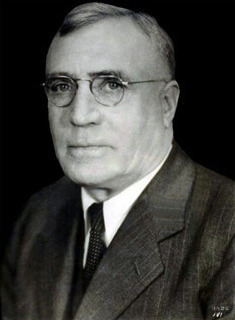William Thomas Piper, Sr (William Thomas Piper)

Aviation Pioneer. Often referred to as “the Henry Ford of Aviation”. A 1903 graduate of Harvard University, he worked as a construction superintendent until 1914. He served with the U.S. Army’s Corp of Engineers during WWI attaining the rank of Captain. He also worked the Pennsylvania Oil fields in the Bradford area after that time where he became interested in aviation and learned of “Taylorcraft”, the company he would later purchase and turn into a family legacy. His first plane, the “Chummy” took flight just before the Great Depression of 1929 and his company didn’t sell it’s first plane until 1931. The first “Cub” flew on September 12, 1930 but was underpowered and the power-plant was scrapped in favor of a more powerful one. The name stuck though, and “Cub” became a synonym for light airplanes all over the world. He purchased the defunct Taylorcraft Aircraft Corporation of Bradford, PA in 1936. After a fire destroyed the factory in 1937, he moved the company to Lock Haven and re-named it the Piper Aircraft Corporation. The rest as they say, is History. In 1938, he introduced the J-3 Cub and within a decade, the bright yellow Piper Cubs were flying the skies in greater numbers than any other single airplane before or since. As WWII loomed, the Cub became the primary training aircraft for U.S. pilots, with three out of four learning to fly in them. Convinced that his aircraft could help the war effort in other capacities, he convinced the War Department to give them a try in large Scale Army maneuvers in Tennessee in June 1941, and then later in Texas, Louisiana and the Carolina’s. From his personal finances, he supplied eight new J-3 Cub airplanes, complete with radios, factory pilots and mechanics for the maneuvers. As summer turned into fall of 1941, the planes earned the respect of many within the military, including: Lt. General Walter Kreuger, Maj. General Ennis Swift and staff officers Col. Dwight D. Eisenhower and Major Mark Clark. Pipers contention that light planes could and should be used to control troop movements, scout, patrol, drop bombs and torpedoes, ferry personnel and carry messages was the first proposal to identify these tasks to which Army light planes and helicopters would later be assigned. His ideas proved to be correct and the planes were eventually adopted by the Field Artillery branch for aerial observation and other duties. The planes also served as airborne ambulances to transport wounded soldiers from forward areas back for treatment. Piper did not live to see his inventory and factory destroyed by the June 1972 flooding from Hurricane Agnes, after which production was moved to Vero Beach, Florida. At least 18 different models have been introduced over the years and Piper Aircraft continues as a leader in the light aircraft market to this day. In 1976, he was postumously inducted into the Army Aviation Hall of Fame representing the pre-1942 era. He died at age 89 and is buried in the Piper Family Mausoleum on top of a hill near Lock Haven University, overlooking the City of Lock Haven. An annual fly-in brings hundreds of the yellow Cubs back to the area every year to the airport that bears his name. He was a true visionary whose foresight, determination and leadership led to the popularization of General Aviation in the United States. (bio by: db) Family links: Spouse: Maria Theresa Van DeWater Piper (1881 – 1937)* Children: Thomas F Piper (1914 – 1999)* Howard Piper (1917 – 1981)* *Calculated relationship
Born
- January, 08, 1881
- USA
Died
- January, 01, 1970
- USA
Cemetery
- Highland Cemetery
- Pennsylvania
- USA

